#tapioca slime mold
Text

Brefeldia maxima / tapioca slime mold
by purplesquid
#brefeldia maxima#brefeldia#tapioca slime mold#myxomycota#slime mold#slime mould#texture#clusters#trypo#forest floor#myxomycetes#microbiota#microbiology#microorganisms#purplesquid#moss#nature photography
130 notes
·
View notes
Text
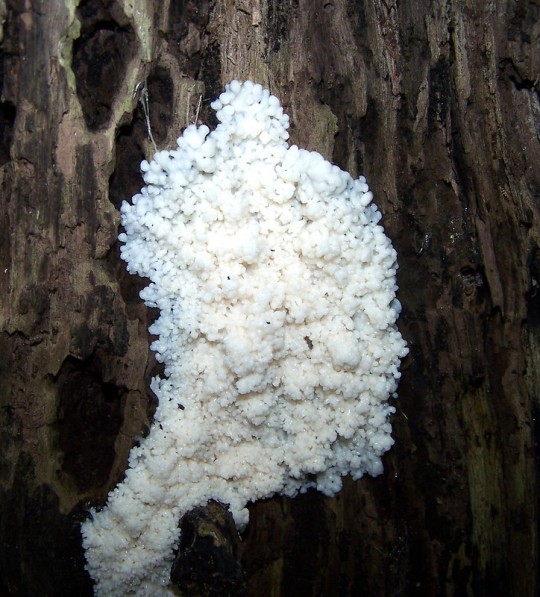
Tapioca slime, Brefeldia maxima
By Bits On Twigs
58 notes
·
View notes
Text

what the hell is this thing!!!
#pix#unidentified fucking thing#thought it was a tapioca slime for a second but no way right?#fungi#(?)#slime mold#(??)
4 notes
·
View notes
Text
A note: Internet says you can substitute cornstarch with twice as much tapioca starch. Don't.
I made my usual from scratch pudding. It was way thick. Even after a lot of extra milk, the consistency is like white edible slime. I know my family won't eat it...it bears a distinct resemblance to a certain other thick white liquid. 😂
I might try freezing it in my ice cream maker. It tastes fine. Too bad I decluttered my popsicle molds.
2 notes
·
View notes
Text

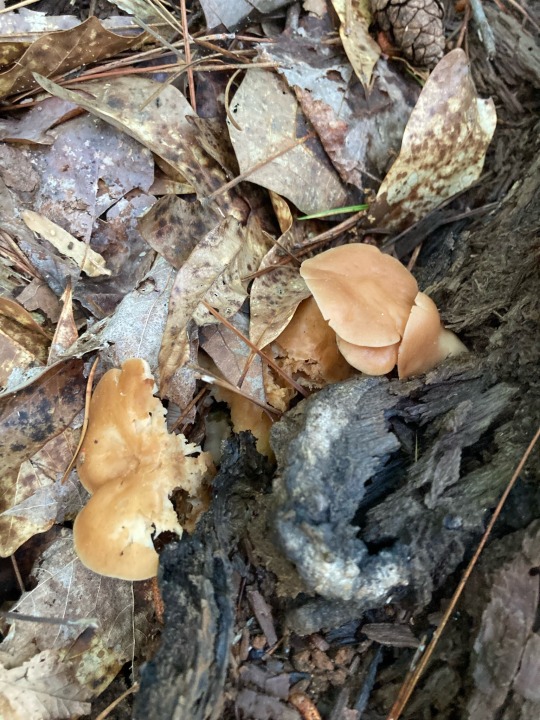

The mushrooms are coming back! I saw a small cluster of honeys and a large expanse of tapioca slime mold yesterday.
#it’s been months since I’ve been seeing much of interest#I know it’ll be ramping up as we go into summer
0 notes
Photo


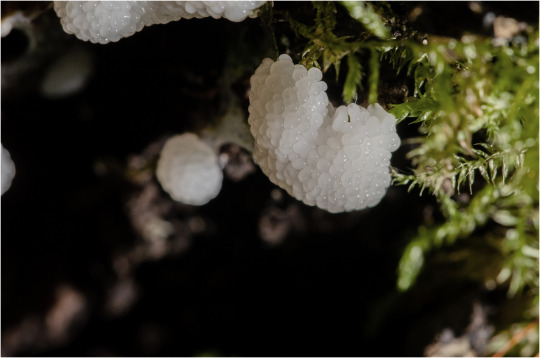
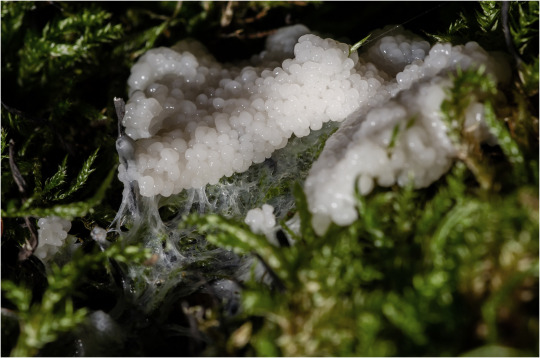
Kæmpeklat (Brefeldia maxima)
Tapioca Slime Mold (Brefeldia maxima)
#Kæmpeklat#Brefeldia maxima#Slimsvamp#Slime mould#Svampedyr#Brefeldia#Tapioca Slime Mold#plasmodial slime mold#plasmodial#Plasmodisk slimsvamp#Plasmodisk svampedyr#Plasmodisk#Amøbe#Amøber#Amoeba#Sommer#Summer#Skatskov#Vesthimmerland
6 notes
·
View notes
Photo





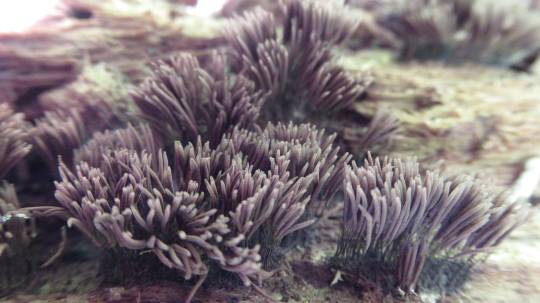

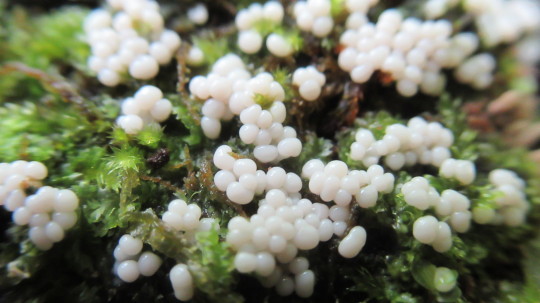
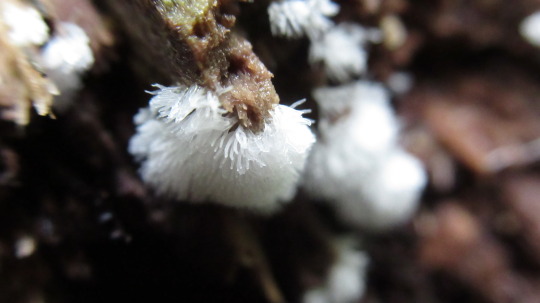

Slime Molds
If interest in fungi is an eccentricity, interest in slime mold is downright demented.
There are hobbies most people understand even if they don’t enjoy them. Gardening is no taboo. Practically everyone thinks flowers are pretty. When they don’t, they must acknowledge that it’s they who don’t fit in.
Birdwatching might not be common, but at least most people are acquainted with birds and understand their appeal. Even the most joyless accountants, thinking these days mostly in monotonous sums, must still feel even a tingle of sadness if a little birdie happens to meet the front end of their Civics or Impalas.
Most the world must have been at some point a birder but probably not a mushroomer.
Isn’t that part of the appeal? Isn’t there something wonderful about a secret love all to yourself? The obscurity of fungus attracts even as it repels.
Naturalist pariahs, though, have weirdos of their own.
Indulging in fungiphilia to the point where crusts and resupinate polypores electrify the imagination might still leave some feeling that they’re normal people with unusual taste.
The line is crossed with slime mold.
Slime molds aren’t fungi. They are members of that biological grab bag called Protista. I’m no expert, but I have hunch taxonomists happily pick out life forms that fit into more comprehensive categories (animals, plants, fungi, bacteria, and archea) only to get overwhelmed with the heaps that remain.
Screw this, taxonomists say. I give you Protista!
Some people say Fungi is the odd macro-kingdom out, because they are neither plant nor animal. That’s conundrum enough for most. But protists are neither plant nor animal, nor are they ‘neither plant nor animal.’
What do you think that, you stupid human?
Protists are Eukaryotic. Most are heterotrophs, while some photosynthesize. Most are single-celled, though some are multi-cellular. Some start off their life cycles as individualistic cellular organisms, only to later assemble with others into a slug-like blob that moves as one before transforming yet again into sporangia.
For a kingdom, if they can truly be called one, they are unique in that many are more closely related to members of other kingdoms than to each other.
They are sub-categorized according to their like.
Algae are like plants. Protizoa are like animals. And slime molds and water molds are like fungi.
At first, you feel a little self conscious about looking for and delighting in their appearance. Then, you settle into it.
You look carefully after the rain wherever wood rots. Just try not to confuse them with snail eggs.
Their names are fun to say: Pretzel Slime. Dog Vomit or Scrambled Eggs. Honeycomb Coral. White Fingers. Tapioca. Chocolate Tube Slime. Wolf’s Milk. Orange Pin. Raspberry Slime. Birdcage.
They are small. Look harder for them than for fungi. And they are striking in both their complexity and simplicity.
I won’t pretend to know much more than that. A little research quickly reveals, unsurprisingly, that I was taught almost nothing about them.
That’s the thing about much of nature, really.
It doesn’t come to you.
You have to find it on your own.
27 notes
·
View notes
Text

Seems like tapioca slime mold? (Brefeldia maxima)
25 notes
·
View notes
Text
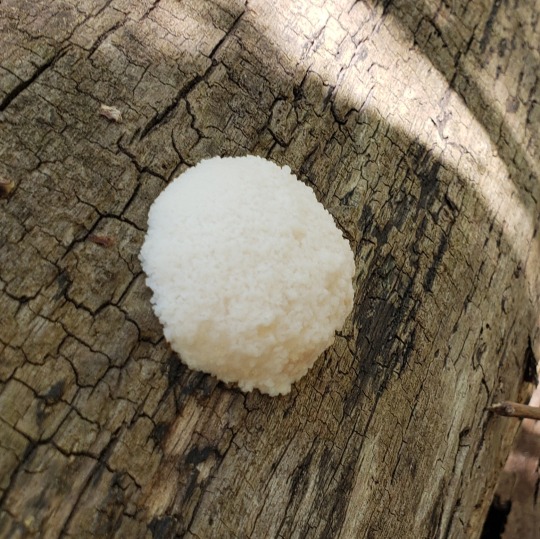

I'm thinking this may be tapioca slime mold Ive been finding alot of mold recently
32 notes
·
View notes
Video
Found what I thought was some kind of slime mold until I started to take a pic and it moved. This little caterpillar was covered in beautiful white hair that look almost like down, and under the hair it looked like tapioca balls all stuck together. Overall it had this pearly translucency that was beautiful. https://www.instagram.com/p/CD1oJnPpBwz/?igshid=qswbowokxl3p
3 notes
·
View notes
Text
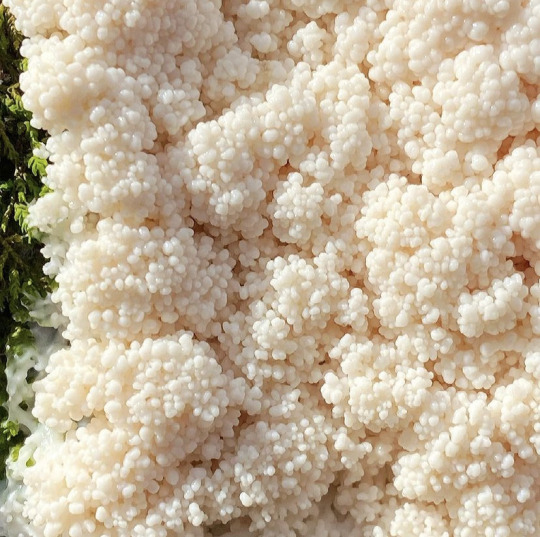
Brefeldia maxima - tapioca slime mold
by Meg Madden
#brefeldia maxima#tapioca slime mold#meg madden#myxomycota#slime mold#slime mould#forest floor#myxomycology#forestcore#myxomycetes#microbiota#protists#biology#microbiology#mycology#fungi#brefeldia#clusters#trypo#trypophobia
92 notes
·
View notes
Photo
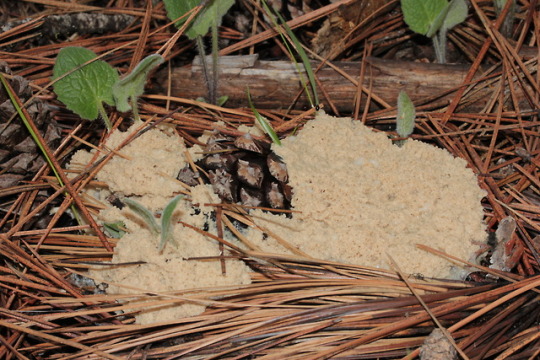


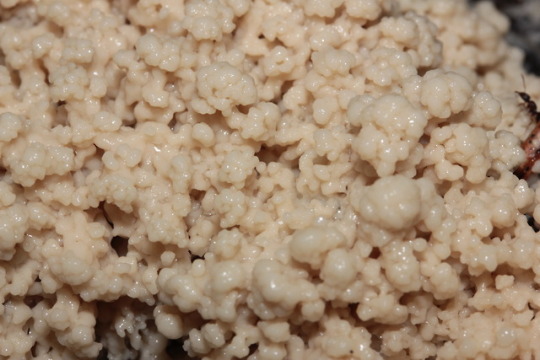




Brefeldia maxima, tapioca slime mold
Rattlesnake National Recreation Area, Missoula, Montana
1 May 2018
#photography#brefeldia maxima#slime mold#missoula#montana#macro#rattlesnake national recreation area
7 notes
·
View notes
Text
Pilgrim at Tinker Creek by Annie Dillard

We don’t know what’s going on here. If these tremendous events are random combinations of matter run amok, the yield of millions of monkeys at millions of typewriters, then what is it in us, hammered out of those same typewriters, that they ignite? We don’t know. Our life is a faint tracing on the surface of mystery, like the idle, curved tunnels of leaf miners on the face of a leaf. We must somehow take a wider view, look at the whole landscape, really see it, and describe what’s going on here. Then we can at least wail the right question into the swaddling band of darkness, or, if it comes to that, choir the proper praise. (Heaven and Earth in Jest, p. 10)
***
I am an explorer, then, and I am also a stalker, or the instrument of the hunt itself. Certain Indians used to carve long grooves along the wooden shafts of their arrows. They called the grooves “lightning marks,” because they resembled the curved fissure lightning slices down the trunks of trees. The function of lightning marks is this: if the arrow fails to kill the game, blood from a deep wound will channel along the lightning mark, streak down the arrow shaft, and spatter to the ground, laying a trail dripped on broad-leaves, on stones, that the barefoot and trembling archer can follow into whatever deep or rare wilderness it leads. I am the arrow shaft, carved along my length by unexpected lights and gashes from the very sky, and this book is the straying trail of blood. (Heaven and Earth in Jest, p. 14)
***
When her doctor took her bandages off and led her into the garden, the girl who was no longer blind saw “the tree with the lights in it.” It was for this tree I searched through the peach orchards of summer, in the forests of fall and down winter and spring for years. Then one day I was walking along Tinker Creek thinking of nothing at all and I saw the tree with the lights in it. I saw the backyard cedar where the mourning doves roost charged and transfigured, each cell buzzing with flame. I stood on the grass with the lights in it, grass that was wholly fire, utterly focused and utterly dreamed. It was less like seeing than like being for the first time seen, knocked breathless by a powerful glance. The flood of fire abated, but I’m still spending the power. Gradually the lights went out in the cedar, the colors died, the cells unflamed and disappeared. I was still ringing. I had been my whole life a bell, and never knew it until at that moment I was lifted and struck. I have since only very rarely seen the tree with the lights in it. The vision comes and goes, mostly goes, but I live for it, for the moment when the mountains open and a new light roars in spate through the crack, and the mountains slam. (Seeing, p. 35)
***
This is the sort of stuff I read all winter. The books I read are like the stone men built by the Eskimos of the great desolate tundras west of Hudson’s Bay. They still build them today, according to Farley Mowat. An Eskimo traveling alone in flat barrens will heap round stones to the height of a man, travel till he can no longer see the beacon, and build another. So I travel mute among these books, these eyeless men and women that people the empty plain. I wake up thinking: What am I reading? What will I read next? I’m terrified that I’ll run out, that I will read through all I want to, and be forced to learn wildflowers at last, to keep awake. (Winter, p. 44)
***
When I was in elementary school, one of the teachers brought in a mantis egg case in a Mason jar. I watched the newly hatched mantises emerge and shed their skins; they were spidery and translucent, all over joints. They trailed from the egg case to the base of the Mason jar in a living bridge that looked like Arabic calligraphy, some baffling text from the Koran inscribed down the air by a fine hand. Over a period of several hours, during which time the teacher never summoned the nerve or the sense to release them, they ate each other until only two were left. Tiny legs were still kicking from the mouths of both. The two survivors grappled and sawed in the Mason jar; finally both died of injuries. I felt as though I myself should swallow the corpses, shutting my eyes and washing them down like jagged pills, so all that life wouldn’t be lost. (The Fixed, p. 56)
***
Nature is, above all, profligate. Don’t believe them when they tell you how economical and thrifty nature is, whose leaves return to the soil. Wouldn’t it be cheaper to leave them on the tree in the first place? This deciduous business alone is a radical scheme, the brainchild of a deranged manic-depressive with limitless capital. Extravagance! Nature will try anything once. This is what the sign of the insects says. No form is too gruesome, no behavior too grotesque. If you’re dealing with organic compounds, then let them combine. If it works, if it quickens, set it clacking in the grass; there’s always room for one more; you ain’t so handsome yourself. This is a spendthrift economy; though nothing is lost, all is spent. (The Fixed, p. 66)
***
This is it, I think, this is it, right now, the present, this empty gas station, here, this western wind, this tang of coffee on the tongue, and I am patting the puppy, I am watching the mountain. And the second I verbalize this awareness in my brain, I cease to see the mountain or feel the puppy. I am opaque, so much black asphalt. But at the same second, the second I know I’ve lost it, I also realize that the puppy is still squirming on his back under my hand. Nothing has changed for him. He draws his legs down to stretch the skin taut so he feels every fingertip’s stroke along his furred and arching side, his flank, his flung-back throat. I sip my coffee. I look at the mountain, which is still doing its tricks, as you look at a still-beautiful face belonging to a person who was once your lover in another country years ago: with fond nostalgia, and recognition, but no real feeling save a secret astonishment that you are now strangers. Thanks. For the memories. It is ironic that the one thing that all religions recognize as separating us from our creator—our very self-consciousness—is also the one thing that divides us from our fellow creatures. It was a bitter birthday present from evolution, cutting us off at both ends. I get in the car and drive home. (The Present, p. 80)
***
My mind branches and shoots like a tree. (The Present, p. 90)
***
If you analyze a molecule of chlorophyll itself, what you get is one hundred thirty-six atoms of hydrogen, carbon, oxygen, and nitrogen arranged in an exact and complex relationship around a central ring. At the ring’s center is a single atom of magnesium. Now: If you remove the atom of magnesium and in its exact place put an atom of iron, you get a molecule of hemoglobin. The iron atom combines with all the other atoms to make red blood. . . . (Intricacy, p. 127)
***
What if God has the same affectionate disregard for us that we have for barnacles? I don’t know if each barnacle larva is of itself unique and special, or if we the people are essentially as interchangeable as bricks. My brain is full of numbers; they swell and would split my skull like a shell. I examine the trapezoids of skin covering the back of my hands like blown dust motes moistened to clay. I have hatched, too, with millions of my kind, into a milky way that spreads from an unknown shore. I have seen the mantis’s abdomen dribbling out eggs in wet bubbles like tapioca pudding glued to a thorn. I have seen a film of a termite queen as big as my face, dead white and featureless, glistening with slime, throbbing and pulsing out rivers of globular eggs. Termite workers, who looked like tiny longshoremen unloading the Queen Mary, licked each egg as fast as it was extruded to prevent mold. The whole world is an incubator for incalculable numbers of eggs, each one coded minutely and ready to burst. (Fecundity, p. 169)
***
I have to look at the landscape of the blue-green world again. Just think: in all the clean beautiful reaches of the solar system, our planet alone is a blot; our planet alone has death. I have to acknowledge that the sea is a cup of death and the land is a stained altar stone. We the living are survivors huddled on flotsam, living on jetsam. We are escapees. We wake in terror, eat in hunger, sleep with a mouthful of blood. (Fecundity, p. 177)
***
Either this world, my mother, is a monster, or I myself am a freak. (Fecundity, p. 179)
***
Is this what it’s like, I thought then, and think now: a little blood here, a chomp there, and still we live, trampling the grass? Must everything whole be nibbled? Here was a new light on the intricate texture of things in the world, the actual plot of the present moment in time after the fall: the way we the living are nibbled and nibbling—not held aloft on a cloud in the air but bumbling pitted and scarred and broken through a frayed and beautiful land. (The Horns of the Altar, p. 230)
***
I am a frayed and nibbled survivor in a fallen world, and I am getting along. I am aging and eaten and have done my share of eating too. I am not washed and beautiful, in control of a shining world in which everything fits, but instead am wandering awed about on a splintered wreck I’ve come to care for, whose gnawed trees breathe a delicate air, whose bloodied and scarred creatures are my dearest companions, and whose beauty beats and shines not in its imperfections but overwhelmingly in spite of them, under the wind-rent clouds, upstream and down. Simone Weil says simply, “Let us love the country of here below. It is real; it offers resistance to love.” (The Horns of the Altar, p. 245)
***
I stood at the window, the bay window on which one summer a waxen-looking grasshopper had breathed puff puff, and thought, I won’t see this year again, not again so innocent; and longing wrapped round my throat like a scarf. (The Waters of Separation, p. 265)
0 notes
Text

Brefeldia maxima by fungispot
“Tapioca slime mold (Brefeldia maxima) is a species of non-parasitic plasmodial slime mold, and a member of the class Myxomycetes. It is commonly known as tapioca slime mold because of its peculiar pure white, tapioca pudding-like appearance. A common species with a worldwide distribution, particularly in North America and Europe. It is often found on bark after heavy rain or excessive watering. Their spores are produced on or in aerial sporangia and are spread by wind, however beetles of the family Lathridiidae are also reported to disperse the spores.”
#tapioca slime mold#brefeldia#brefeldia maxima#fungispot#trypophobia#myxomycota#slime mold#myxomycetes#myxomycology#mycology#forest floor#protists#microbiota#microorganisms#microbiology
22 notes
·
View notes




